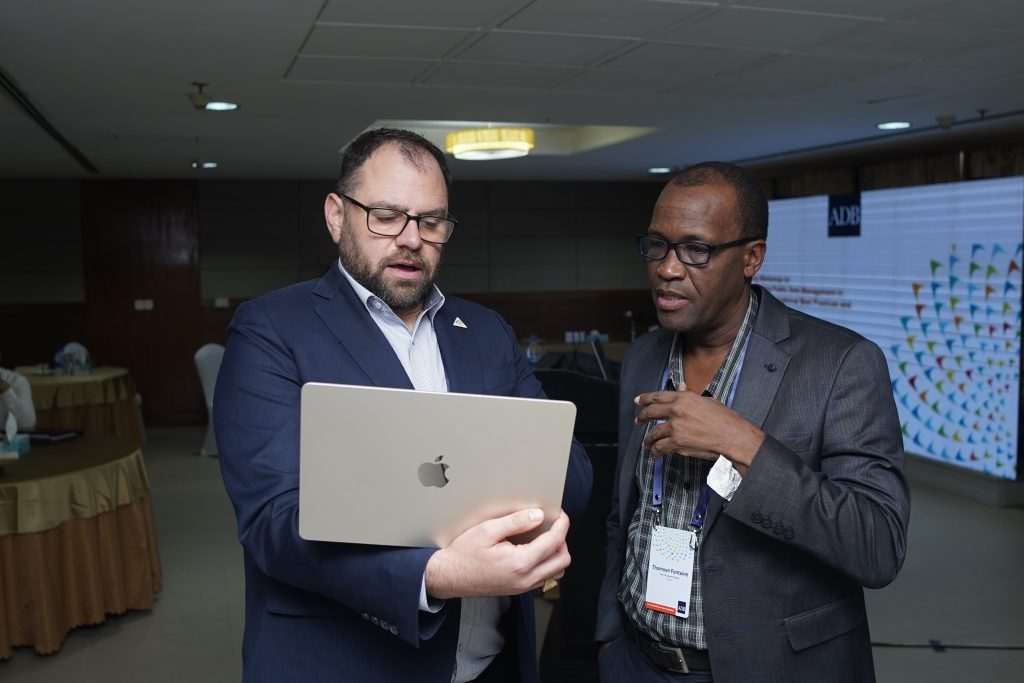
From July 17–19, 2025, I had the opportunity to co-facilitate a three-day training workshop in Cox’s Bazar, focused on strengthening public debt management in Bangladesh. The event, hosted by the Asian Development Bank, brought together government officials and experts to explore international best practices and identify key reform priorities. I was engaged by Linpico SARL to support the delivery of the workshop.
Two key takeaways stood out for me: first, the exclusion of state-owned enterprise (SOE) debt from official public debt statistics; and second, the gaps in the legal framework that underpins debt management in Bangladesh.
While the country officially reports a debt-to-GDP ratio of around 39%, this figure is misleading. It excludes significant liabilities—especially those of SOEs and contingent obligations such as government guarantees. In our discussions, several participants noted that SOE debt alone could rival or even exceed central government debt. This points to the existence of hidden fiscal risks that may go unrecognized until they jeopardize macroeconomic stability.
The risks are further amplified by shortcomings in the Public Debt Act of 2022. Although the Act provides for borrowing authority and delineates the roles of some institutions, it omits several fundamentals: there is no legal definition of borrowing purposes, no debt ceiling, and no requirement for parliamentary approval. Perhaps most importantly, the Act fails to establish a dedicated debt management office (DMO), leaving responsibilities fragmented across multiple agencies and weakening coordination.
We also found that while some relevant provisions exist in secondary legislation—such as the Public Money and Budget Management Act (2009) and the Sovereign Guarantee Guidelines (2014)—these documents were not available in English and could not be assessed. Without a strong and coherent primary legal framework, it’s difficult to ensure that debt management policies are consistently applied or enforced.
During the workshop, many of us emphasized the importance of embedding good practices—such as the regular publication of a Medium-Term Debt Management Strategy (MTDS) and annual debt reports—into primary legislation. Without legal mandates, these practices risk remaining aspirational rather than operational.
Sri Lanka’s experience served as a timely and relevant comparison. Lakshini Fernando of the ADB, based in Colombo, shared lessons from Sri Lanka’s recent debt crisis—where unchecked SOE debt played a central role. During just the first four months of 2022, Sri Lanka’s SOEs reported losses totaling SLR 860 billion, surpassing the annual losses of the previous year. Much of this debt was denominated in foreign currency and funded by state-owned banks, creating both currency and banking sector vulnerabilities.
In response, Sri Lanka has launched a series of reforms to reduce fiscal risks and strengthen SOE governance. These include:
– Cost-reflective pricing for electricity and fuel to reduce unsustainable subsidies;
– Balance sheet restructuring of major SOEs like the Ceylon Petroleum Corporation (CPC) and Ceylon Electricity Board (CEB) to better manage debt and currency exposure;
– Opening key sectors to competition to reduce inefficiencies; and
– Drafting new legislation, including an SOE law, PPP law, and procurement law, expected to be tabled in Parliament in 2025.
These reforms are not just technical exercises—they are central to restoring fiscal sustainability and rebuilding market confidence. For Bangladesh, Sri Lanka’s experience reinforces the urgent need to strengthen legal foundations and bring hidden liabilities, especially those of SOEs, into full view.
